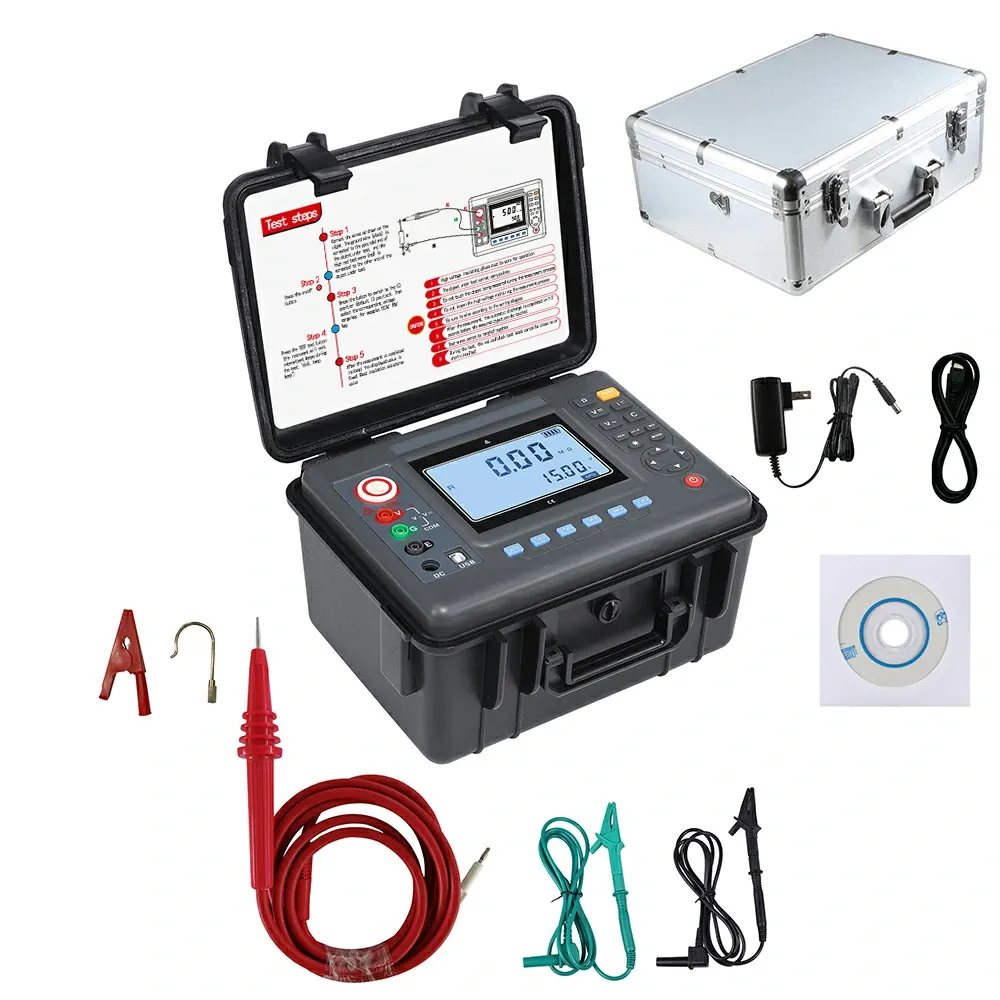 English
English


insulation tester
Understanding Insulation Testers Their Importance and Application
Insulation testers are essential tools in the electrical and construction industries, designed to measure the insulation resistance of electrical installations. These devices are critical for ensuring safety, efficiency, and reliability in electrical systems. Proper insulation helps protect against electric shocks, short circuits, and equipment failures, making the role of insulation testers paramount.
What is an Insulation Tester?
An insulation tester, often referred to as a megohmmeter or insulation resistance tester, is a device used to measure the resistance of electrical insulation. The tester applies a high voltage (usually between 250V and 5kV) to the insulation being tested and measures the resulting current flow. The insulation resistance is then calculated and displayed in ohms. A higher insulation resistance indicates better insulation quality, while lower values can signify potential problems.
Why is Insulation Testing Important?
The integrity of electrical insulation is crucial for several reasons
1. Safety Faulty insulation can lead to electric shocks, which can be fatal. Regular testing helps identify weak insulation before serious accidents occur, ensuring the safety of workers and the general public.
2. Equipment Longevity Weak insulation can lead to electrical arcing and overheating, which may damage electrical equipment. Regular insulation testing helps prolong the life of machinery by identifying insulation failures early.
3. Compliance Many industries must adhere to strict regulations and standards concerning electrical installations. Regular insulation testing ensures compliance with these guidelines, avoiding legal issues and promoting workplace safety.
4. Preventive Maintenance Regular testing allows businesses to adopt a preventive maintenance approach. Identifying and rectifying insulation issues before they cause significant failures can help save time and costs associated with repairs and downtime.
insulation tester

How to Perform an Insulation Test?
Conducting an insulation test involves several steps
1. Preparation Ensure that the equipment or cables being tested are de-energized and properly disconnected from any power source. This is crucial for safety and accurate readings.
2. Connection Connect the insulation tester to the conductor and earth (ground) or between conductors if testing a multi-core cable.
3. Selecting Voltage Choose the appropriate test voltage based on the equipment's specifications and insulation material. Common test voltages are 250V, 500V, and 1000V.
4. Testing Activate the tester. The device will apply the selected voltage and measure the insulation resistance. Wait for a few moments to obtain a stable reading.
5. Recording Results Document the readings and compare them against the acceptable standards for the insulation material being tested. Generally, insulation resistance should be above 1 MΩ for most equipment, but this can vary based on specific applications.
6. Interpreting Results Analyze the data collected. If resistance is lower than acceptable values, further investigation and maintenance may be required.
Conclusion
Insulation testers play a vital role in maintaining electrical safety and reliability. Regular insulation testing not only ensures compliance with safety standards but also safeguards personnel and equipment. By understanding the importance of these devices and how to use them effectively, professionals can contribute significantly to the overall safety and efficiency of electrical systems. As technology evolves, insulation testing methods and devices are likely to advance as well, further improving safety standards in the ever-evolving electrical landscape.
-
Differences between open cup flash point tester and closed cup flash point testerNewsOct.31,2024
-
The Reliable Load Tap ChangerNewsOct.23,2024
-
The Essential Guide to Hipot TestersNewsOct.23,2024
-
The Digital Insulation TesterNewsOct.23,2024
-
The Best Earth Loop Impedance Tester for SaleNewsOct.23,2024
-
Tan Delta Tester--The Essential Tool for Electrical Insulation TestingNewsOct.23,2024





